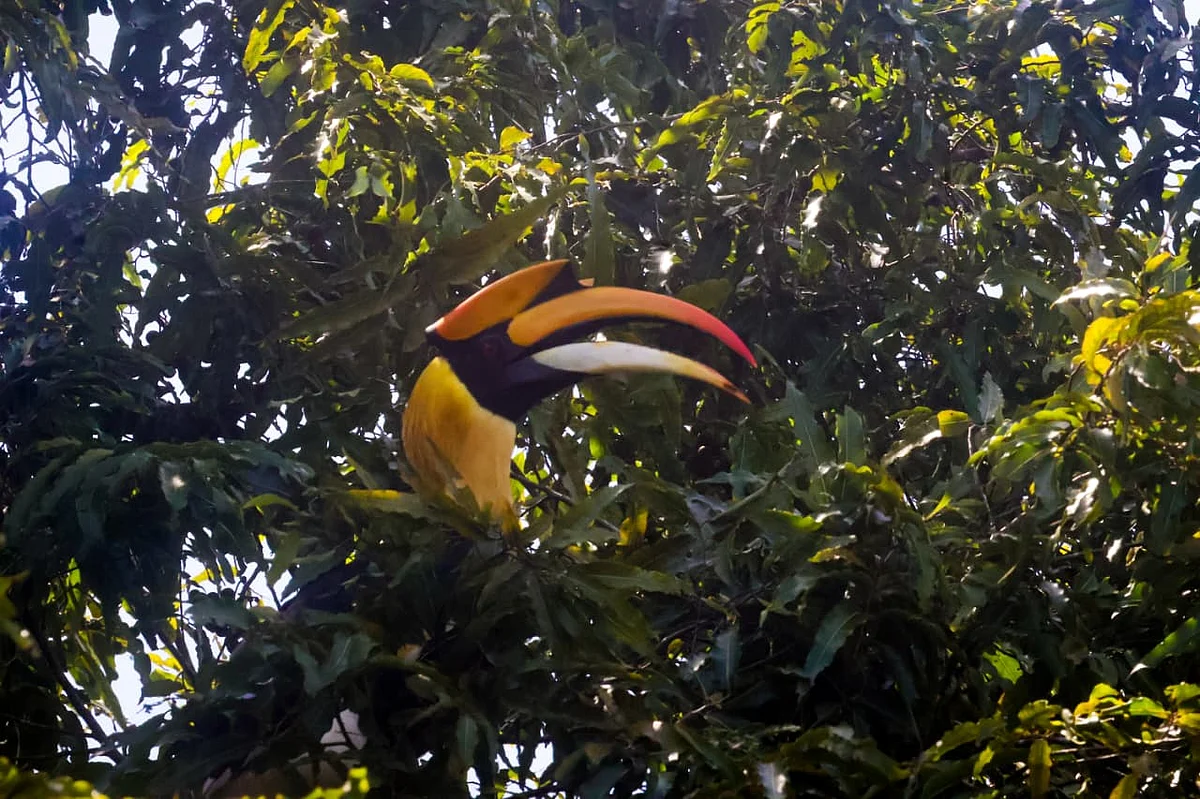He added that such sightings of the Great Hornbills were unusual. However, a similar report also came from Kannur in July, where the bird was allegedly spotted near the Ezhimala Naval Academy campus.
Experts noted that the bird is generally not afraid of humans. However, it remains vigilant and forages among large native fruiting tree species. “This is the first time a sighting is recorded from Kerala where the location is at sea level. The larger hornbill species sometimes travel more than 100–200 km. The nearest Great Hornbill populations here are at Vazhachal, Vellikulangara–Anapantham, Peechi, and Nelliyampathi, which are about 35–50 km away from the spotted location,” he added.
The hornbill’s visit occurred near the house of Ms Sabira, a staff member of MES Asmabi College, Kodungallur, where the Hornbill Foundation’s Research Extension Centre is functioning. Her familiarity with the work helped the team. Her young boys, Irfan and Sinan, also assisted.
“We witnessed the unique feeding behaviour of the Great Hornbill, where the bird plucks fruits with the tip of its beak, tosses them in the air between its upper and lower beaks, and then swallows it,” Aswin shared.
According to the experts, the sighting in the coastal belt could allegedly signal three possibilities:
-
As conservation efforts become robust in a core population area and population size increases, an increased number of such movements of the hornbills can be seen in the non-nesting season. This can be regarded as a success indicator of the long-term conservation efforts of these birds in the Vazhachal to Nelliyampathi forest belts.
-
It can be linked to changes in animal–bird behaviour, where the intensity of interaction between humans and wildlife increases with more exposure in forest areas. This could mean that the birds are no longer afraid of humans and are becoming more familiar with them.
-
The sighting could have a relationship with changes in the climate, especially since this year’s rain started early, and there is still mist and cloud movement above the ground, along with increased vegetation growth.
“All these factors need further, in-depth study,” Amitha added.
